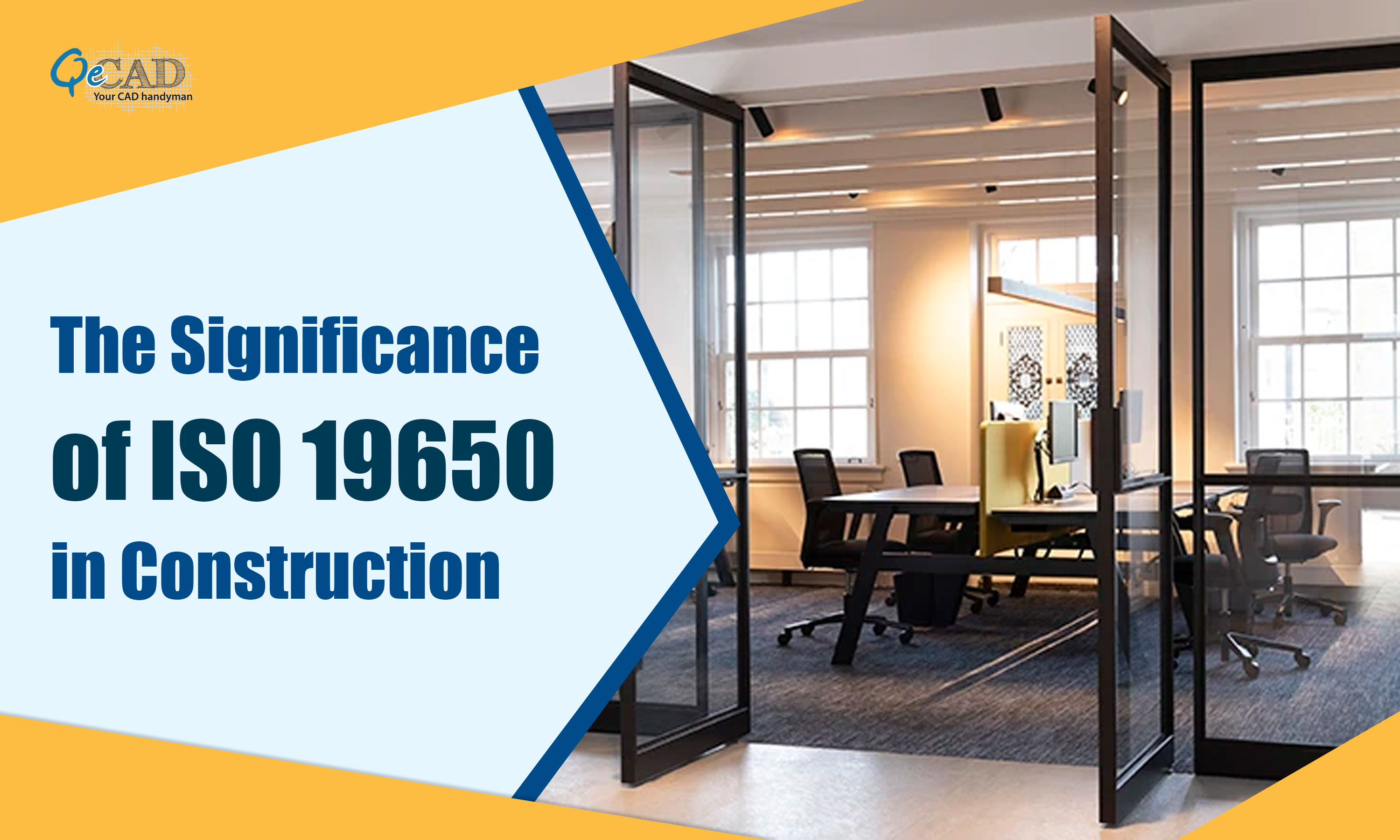
Introduction
The construction industry is evolving rapidly, driven by technological advancements, sustainability concerns, and a growing demand for efficient project management. To keep up with these changes, the International Organization for Standardization (ISO) introduced ISO 19650.
What is ISO 19650?
ISO 19650 is an international standard developed by the ISO that focuses on the organization and digitization of information related to the construction and operation of buildings and infrastructure. It is a component of the extensive ISO 55000 series focused on the field of asset management.
ISO 19650 aims to improve collaboration, information management, and project delivery in the construction industry. It provides a standardized framework for the management of information throughout the entire life cycle of a built asset, from initial concept through design, construction, and eventual decommissioning or demolition.
ISO 19650 is divided into several parts, with ISO 19650-1 and ISO 19650-2 being the most notable. ISO 19650-1 delineates the foundational concepts and principles governing information management, whereas ISO 19650-2 offers direction regarding the structuring of information pertaining to construction projects through the utilization of building information modeling (BIM).
This standard has become a game-changer for the construction sector, bringing a host of benefits to various stakeholders. In this blog, we will analyze five compelling reasons why ISO 19650 is essential for the construction industry.
1) Enhanced Collaboration and Communication
One of the primary objectives of ISO 19650 is to improve collaboration and communication in construction projects. In a typical construction project, numerous professionals are involved, including architects, engineers, contractors, subcontractors, and owners. Effective collaboration among these diverse stakeholders is critical to a project’s success.
ISO 19650 facilitates this collaboration by establishing a standardized approach to managing information and documentation throughout the project’s lifecycle. This includes defining clear roles and responsibilities, ensuring consistent terminology, and streamlining information exchange processes. The result is improved communication, reduced misunderstandings, and enhanced teamwork, which ultimately leads to more efficient and successful projects.
2) Better Information Management
Effectively handling and management of information for a construction project can prove challenging due to the substantial volume of data generated throughout the project’s lifecycle. ISO 19650 introduces a structured framework for information management, emphasizing the importance of well-organized, accurate, and up-to-date information.
By adopting ISO 19650, BIM Company can establish clear protocols for the creation, storage, and retrieval of project-related data. This guarantees that all involved parties can access the necessary information precisely when it is required.
Effective information management not only reduces the risk of errors but also enhances decision-making, helping construction projects stay in-line and within budget.
3) Cost Savings and Risk Mitigation
The construction industry is known for its complexities and the potential for unexpected challenges. These challenges often result in budget overruns and delays. ISO 19650 helps mitigate these risks by promoting best practices in project management.
ISO 19650, through the standardization of procedures and documentation, minimizes the chances of expensive errors and conflicts. It also establishes a structured foundation for the thorough evaluation and control of risks across the project’s entire lifespan. This proactive risk mitigation approach can result in substantial cost reductions and enhanced project results.
4) Sustainability and Accountability
Sustainability has become a significant concern in the construction industry, with a growing emphasis on reducing the environmental impact of projects. ISO 19650 aligns with these sustainability goals by promoting efficient resource utilization and environmental responsibility.
The standard promotes the practice of construction firms documenting and overseeing sustainability-related data, encompassing aspects like the adoption of environmentally friendly materials and the implementation of energy-efficient designs. This not only contributes to environmental well-being but also aligns with the growing need for sustainable construction methods. Moreover, ISO 19650 promotes accountability by requiring clear documentation of all decisions and actions related to sustainability, making it easier to track and report progress in this area.
5) Global Market Access and Competitiveness
As businesses in the construction industry increasingly operate on a global scale, adhering to internationally recognized standards like ISO 19650 becomes crucial. By implementing this standard, construction companies can improve their global market access and competitiveness.
ISO 19650 is recognized worldwide, which means that companies that follow its guidelines can easily collaborate with international partners, attract investors, and bid for projects in different countries. This not only broadens business prospects but also elevates a company’s standing for trustworthiness and competence.
ISO 19650: Your Key to Global Competitiveness in Construction
ISO 19650 has brought about a significant transformation in the construction industry. It addresses critical issues such as collaboration, information management, cost control, sustainability, and global competitiveness. By adopting this standard, construction CAD Company can streamline their operations, reduce risks, and contribute to a more sustainable and interconnected industry. Moreover, it helps organizations align with global best practices and provides a standardized approach to construction information management, which can be especially valuable in the digital age of construction.
In a rapidly changing world, ISO 19650 is an indispensable tool for staying competitive and successful in the construction sector.
